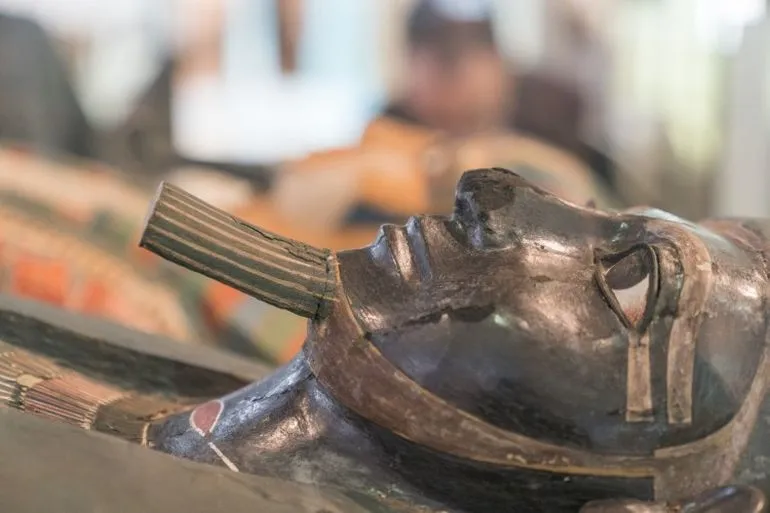The Two Brothers Egyptian mummies (dated from circa 1880 BC) exhibited at the Manchester Museum are considered among the oldest and best-known of all human remains in the establishment’s Egyptology collection. And after almost 4,000-years, as it turns out, with the aid of a state-of-the-art DNA sequencing technique, researchers at the University of Manchester have revealed that the ‘Two Brothers’ probably had different fathers, which makes them half-brothers. Simply put, this might put an end to a more than hundred-year-old debate in the academic circles concerning the relation between the two ancient Egyptians.
Historically, the mummies belong to two men – Khnum-nakht and Nakht-ankh, both of whom undoubtedly hailed from the elite class of the Egyptian society. Pertaining to the latter scope, their ‘joint’ tomb was originally discovered in 1907, at Deir Rifeh, a village 250 miles south of Cairo; with hieroglyphic inscriptions suggesting how both of them were the sons of a local governor. Their mother also had the same name, Khnum-aa, which in itself led to the categorization of the mummies as ‘Two Brothers’.

Interestingly enough, in 1908, during one of the very first morphological assessments, Egyptologists concluded how the mummies were different in their physiology, which suggested a lack of familial ties. And then, considering the aforementioned inscriptions, researchers hypothesized that one of the Two Brothers was possibly adopted. However, this conjecture had its fair share of detractors.
Consequently, fast-forwarding to 2015, University of Manchester researchers strove to gain more insights by successfully extracting DNA from the teeth of the two mummy specimens. As their press release makes it clear
Therefore, in 2015, the DNA was extracted from the teeth and, following hybridization capture of the mitochondrial and Y chromosome fractions, sequenced by a next-generation method. Analysis showed that both Nakht-Ankh and Khnum-Nakht belonged to mitochondrial haplotype M1a1, suggesting a maternal relationship. The Y chromosome sequences were less complete but showed variations between the two mummies, indicating that Nakht-Ankh and Khnum-Nakht had different fathers, and were thus very likely to have been half-brothers.

Dr. Konstantina Drosou, of the School of Earth and Environmental Sciences, who headed the DNA sequencing project, admitted –
It was a long and exhausting journey to the results but we are finally here. I am very grateful we were able to add a small but very important piece to the big history puzzle and I am sure the brothers would be very proud of us. These moments are what make us believe in ancient DNA.
Dr. Campbell Price, Curator of Egypt and Sudan at Manchester Museum, added –
The University of Manchester, and Manchester Museum in particular, has a long history of research on ancient Egyptian human remains. Our reconstructions will always be speculative to some extent but to be able to link these two men in this way is an exciting first.





